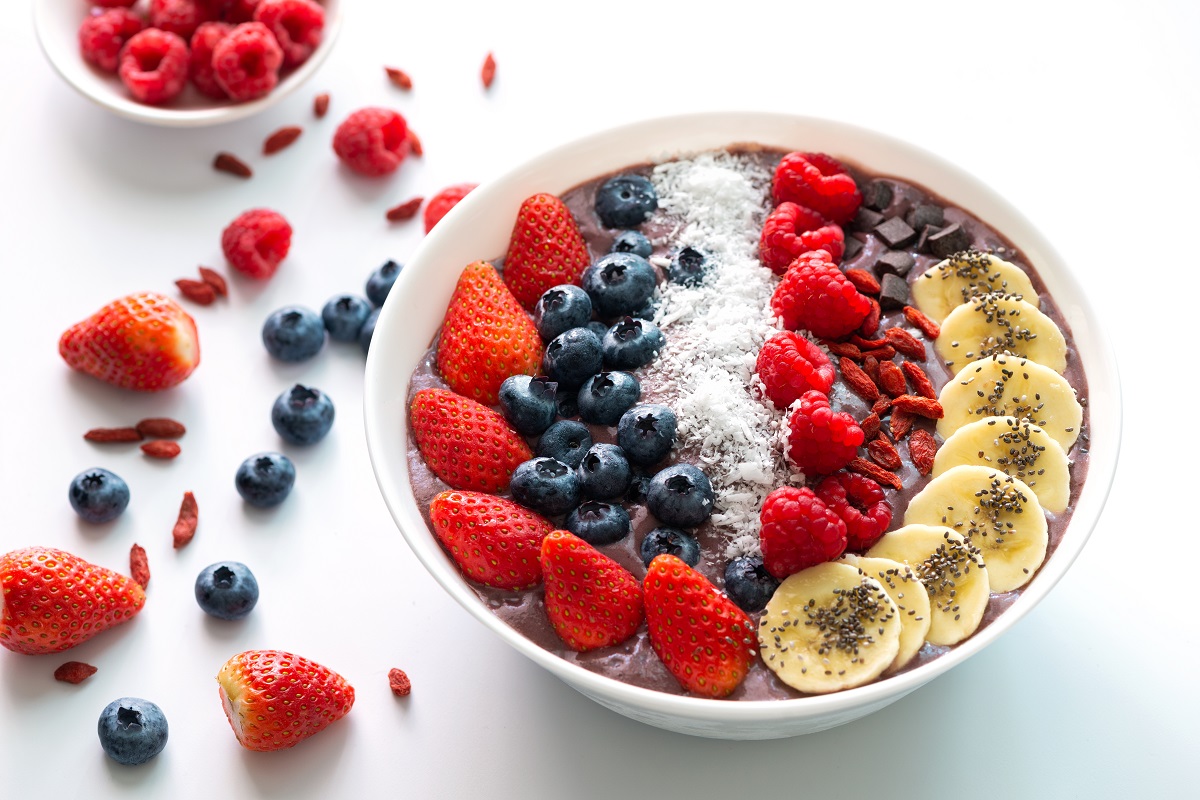How to Cleanse in the Morning

Cleansing in the morning can offer a host of health benefits
Many weight loss programs these days include cleanses: days when you eat little or nothing at all to help speed up your fat burning.
However, there are also many naysayers who claim that cleansing is unhealthy and dangerous.
In fact, cleansing can be a great way to lose weight and promote your overall health and wellbeing. Below, read the truth about what goes on in your body during a cleanse and get some great tips on what you can eat in the morning to cleanse and detoxify your body.
Cleanses: What Happens in Your Body?
Whenever you eat, the cells in your body immediately get to work to start breaking down the food, extracting the nutrients, and transporting the nutrients where they need to go. When you take a day off from eating, your cells get a much needed rest.
Because they can’t extract energy and nutrients from new food, they begin to target the nutrients that re already stored in your body. The body stores its excess nutrients in everyone’s least favourite body part: fat.
When you cleanse, your cells have no choice but to break down the stored fat in your body to get the necessary energy and nutrients. This means that cleansing is the perfect way to lose excess fat. In fact, research has shown that participants engaging in cleanses saw significant short-term weight loss and improvements in their lipid profiles (i.e., improvements in the levels of cholesterol and triglycerides in their blood).
Fat isn’t the only thing to be effected by cleansing. When you take time away from eating, you may actually begin to notice that your appetite decreases significantly, even on days when you aren’t cleansing. In addition, cleanse days can cause improvements in circulation, cardiovascular health, cognitive health, and oxidative stress.
How to Cleanse
There are a variety of different methods out there for performing a cleanse. According to the research, the most effective way to cleanse and detoxify your body is with intermittent fasting.
This means that on certain days of the week, you cleanse by eating little to no food. On the rest of the days, you eat a regular diet full of healthful, clean foods.
Other types of detoxes, such as long-term juice cleanses, don’t always get the same results. Participants may see short-term weight loss, but often regain the weight when returning to a normal eating schedule.
Some studies have also indicated that long-term liquid cleanses can cause significant health problems, such as hyperoxaluria and acute oxalate nephropathy.
Cleansing Breakfasts
If you decide to cleanse by performing intermittent fasting, this means that on most days of the week, you’ll still be consuming an ordinary diet. Even though you aren’t fasting on those days, you can still choose foods that will boost the effects of your cleanse days by promoting your body’s ability to rid itself of unwanted toxins.
For example, some of the best research on detox diets have suggested that foods such as coriander, nori, and olestra have significant detoxification properties.
There are other ingredients that can be extremely beneficial at breakfast time. If you’re trying to cleanse your body, consider these foods while preparing your breakfast:
- sprouted grain breads such as millet, amaranth, rice, spelt, or rye
- nut butters such as almond butter
- clarified butter (also known as ghee)
- steel-cut Oats
- fruits such as apples, kiwi, grapefruit, unsweetened berries, lemons, and pineapple
- natural/organic eggs
Recipes (When You’re Not Cleansing)
If you’re not cleansing on a particular day, here are a few tasty recipes using the ingredients above, as well as other detoxifying whole foods.
Beetroot, Pomegranate & Orange Smoothie
Ingredients:
- 100ml pomegranate juice
- 100ml orange juice
- 1 cooked beetroot
Place all the ingredients in a blender until smooth, and serve immediately over ice.
Quinoa Porridge with Macadamia Nut Milk
Ingredients:
- Seeds from 1 pomegranate
- 200g quinoa flakes
- 75g goji berries
- 1 cinnamon stick
- 475ml macadamia nut milk
- 750ml water
- 100g raspberries
Macadamia Nut Milk Ingredients:
- 200g raw macadamia nuts, soaked for about 4 hours and drained
- 750ml–1 litre purified or filtered water
- To make the Macadamia Nut Milk blend the ingredients in a Vitamix or high-speed blender until smooth, then filter through a muslin bag or a very fine strainer.
- To remove the seeds from the pomegranate, roll it firmly on a work surface to loosen the seeds, then cut it in half and scoop out the seeds with a teaspoon. Set side while you make the porridge.
- Place the quinoa flakes, goji berries, cinnamon stick, 1 cup of the macadamia nut milk and 475ml of the water in a pan. Stir continuously over a medium heat for 2–3 minutes, then crush the raspberries into the pan, add the remaining water and stir for another 2 minutes, until piping hot.
- Heat the remaining macadamia milk in a separate pan.
- Spoon the porridge into 4 bowls, pour over the hot macadamia milk and serve sprinkled with the pomegranate seeds.
Acai Breakfast Bowl

Enjoy an acai breakfast bowl and you’re body will thank you for it!
Ingredients:
- 2 ripe bananas
- 2 tbsp acai powder
- 1/2 cup almond milk
- 2 tsp coconut oil
- 2 tsp bee pollen
- 1 tbsp almond butter
- To garnish: chia seeds crushed almonds, coconut flakes, bee pollen, acai berries
- Add all the ingredients into the blender and pulse to obtain a creamy mixture.
- Distribute evenly into the serving bowls, top with chia seeds, pollen, coconut flakes, pollen and berries, and serve.









